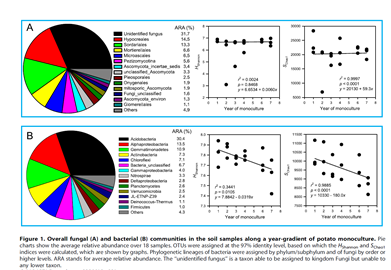
Hui-zhen Qiu
Gansu Agricultural University, China
Title: Effects of continuous potato monoculture on microbial community diversities and taxa abundances in potato rhizosphere soil
Biography
Biography: Hui-zhen Qiu
Abstract
Continuous potato monoculture has been a big problem in potato production in Gansu Province, west China. Long term field experiments were carried out to reveal the mechanism of obstacles from continuous potato monoculture. Soils along a seven-year gradient of potato monoculture were collected and microbial communities and populations were characterized using the approaches of PCR-DGGE, and high throughput pyrosequencing approaches. The principal findings are as follows: the diversity (HShannon) and richness (SChao1) indices of bacterial community were linearly decreased over time and corresponded to a decline of potato tuber yield decline and the disease incidence increase. Second, soil bacterial and fungal communities exhibited differential responses to the potato monoculture, the overall soil bacterial communities were shaped by potato monoculture, Acidobacteria and Nitrospirae were linearly decreased over time in abundance. Fusarium sambucim, Fusarium solani, and Rhizoctonia solani the major soil-borne pathogen-associated fungal genus substantially detected were linearly increased over time in abundance. Molecular ecological network analysis tool was used to study the interactions and network organizations of fungal communities in yield-invigorating (healthy,1-3 years’ continuous potato monoculture) and -debilitating (diseased, 4-7 years’) soils induced by prolonged potato monoculture, based on the relative abundances of internal transcribed spacer sequences derived using pyrosequencing. The results shown that the healthy network had more number of functionally interrelated operational taxonomic units (OTUs) than the diseased one; healthy network contained 6 (4%) generalist OTUs whereas the diseased contained only 1 (0.6%) marginal generalist OTU; and majority (55%) of OTUs in healthy soils were stimulated by a certain set of soil variables but the majorities (63%) in diseased soils were inhibited(Fig.2), which suggested that a healthy community was a better organized or a better operated community than the diseased one; a healthy soil was a soil with variables that encouraged majority of fungi whereas a diseased soil discouraged.



